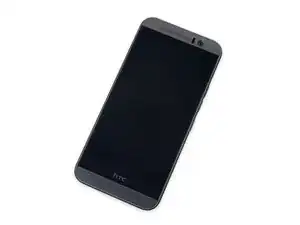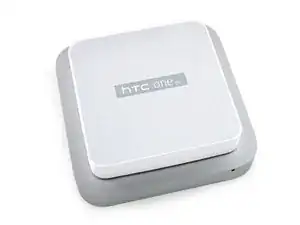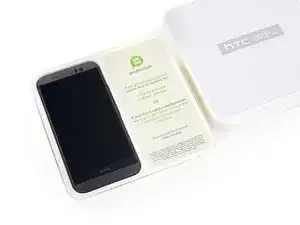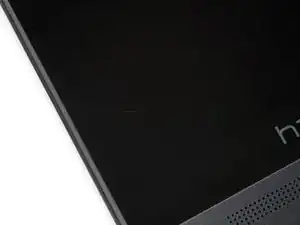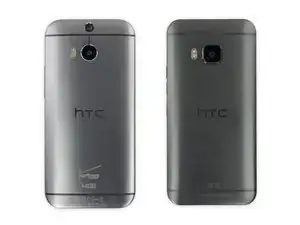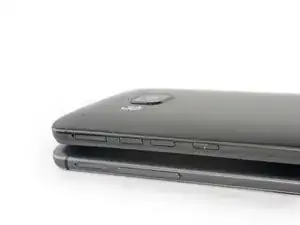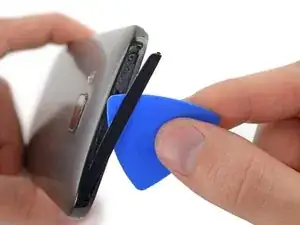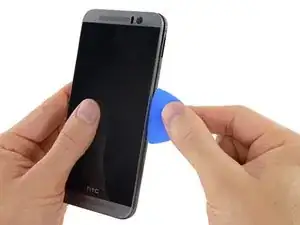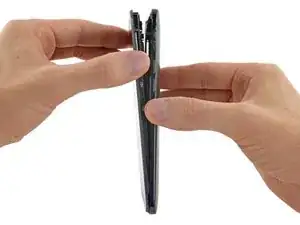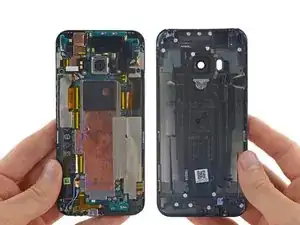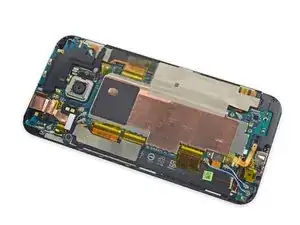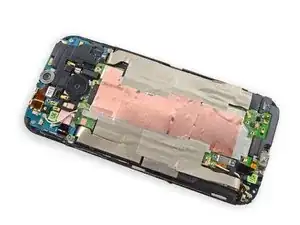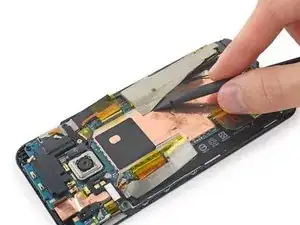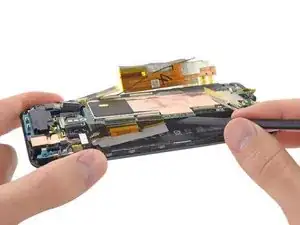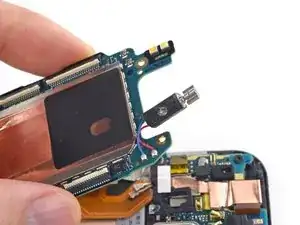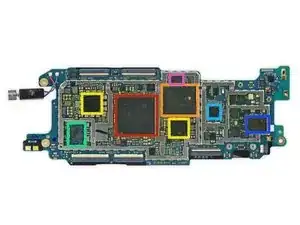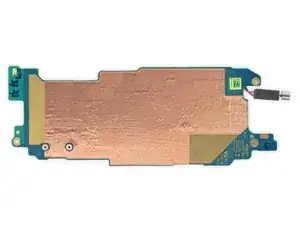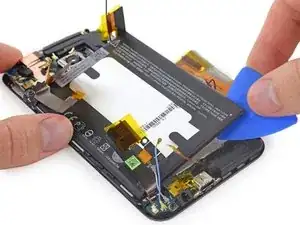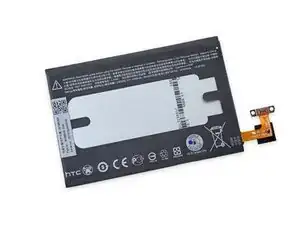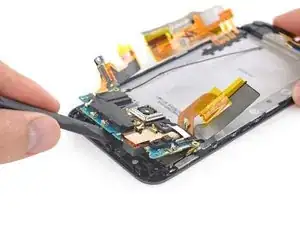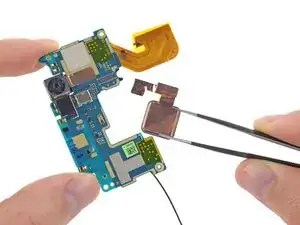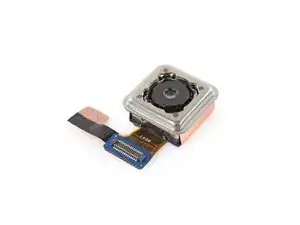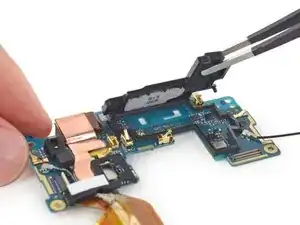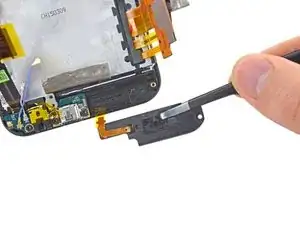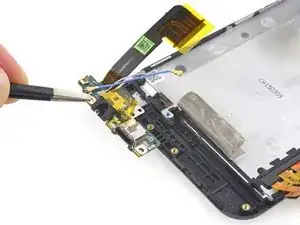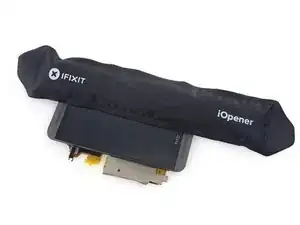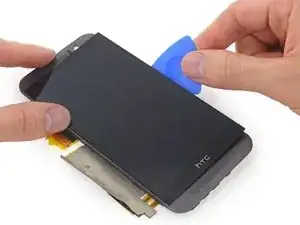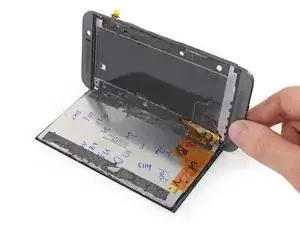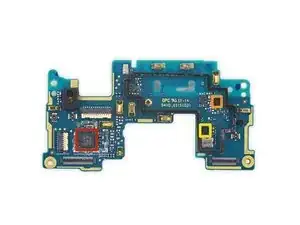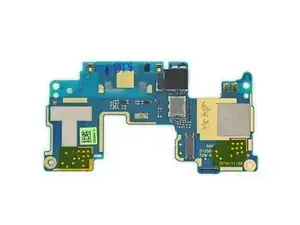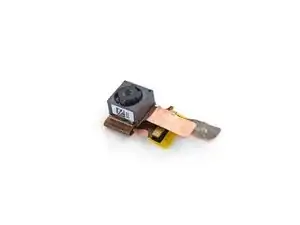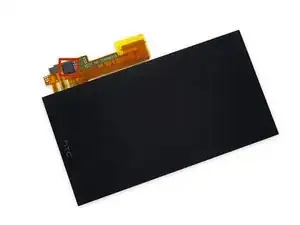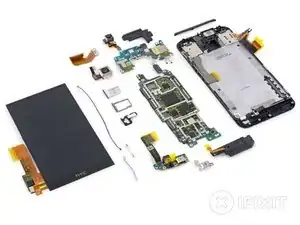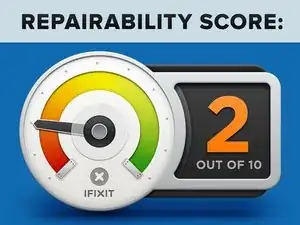Introduction
It's officially spring, which means pastels, bunnies, and shiny new devices to eggsplore. HTC sprouted a third One, the M9, and we hopped right to a teardown. Join us as we crack open our pre-Easter treat, the HTC One M9.
Ready to spring into action? Follow us on Instagram, like us on Facebook, or listen to the birds tweet on Twitter.
Tools
-
-
HTC hopes the M9 will be the One for you. Let's see just what it's packing:
-
5.0-inch, 1920 x 1080 display, with front-facing stereo speakers
-
20 MP rear-facing camera with 4K video recording; HTC UltraPixel front-facing camera with 1080p video recording
-
Qualcomm Snapdragon 810—64-bit, octa-core (4 x 2.0 GHz + 4 x 1.5 GHz)
-
3 GB RAM
-
32 GB of on-board storage; up to 2 TB additional microSD storage
-
LTE, Bluetooth 4.1, NFC, HDMI MHL 3.0, 802.11ac, and IR blaster
-
-
-
Did HTC secretly send us a Mac Mini? No, but it's definitely a uniquely designed box.
-
HTC recently rolled out "Uh-Oh Protection" for One M8 and One M9, promising an entire replacement phone for a cracked screen or water damage in the first year of One-rship.
-
-
-
HTC has been experiencing some shipping delays with the One M9, presumably due to a lack of stock.
-
Coincidentally, our phone seems to have encountered more relaxed quality standards than is expected from HTC.
-
Straight out of the box we noticed a large scratch on the bottom left corner of the display glass.
-
And it doesn't stop there! When we first booted up the phone, we were greeted by a lovely defective pixel near the middle of the screen.
-
-
-
The dual-tone metal unibody of the M9 is practically identical to that of the M8. The gunmetal gray M9 is just a shade darker than its older sibling; otherwise, you might say these HTCs are twins! Well, almost...
-
The M9's most noticeable difference from its predecessor is a return to a single rear camera, like the original HTC One. Possibly HTC decided that competing with the 3DS dual camera was a little beneath them.
-
The M9's secondary metamorphosis was a migrational button shuffle.
-
With the iPhone 6 and 6 Plus, Apple learned that a top-mounted power button doesn't cut it for a hand-stretching phablet, and moved its power switch to the side. Looks like HTC caught on and followed suit with the M9.
-
The M9 also replaces the rocker switch of yesteryear with dedicated volume +/- buttons.
-
-
-
Some persistent picking at the top of the case reveals a couple of Torx screws.
-
Gone are the frontal access panels. The two screws at the top are all the M9 relies on, so far at least.
-
So far, so good. The M8 came fastened with screws rather than formidable adhesive and finicky clips, so let's hope the anti-adhesive trend continues...
-
-
-
Unlike the original HTC One, there's no need to Heat The Case of the M9. After removing the top panel's screws, we get straight to business with an opening pick to Handle Those Clips.
-
We use our trusty pick to
rent the phone in twaincarefully separate the rear case from the body of the phone. -
The bottom clips are particularly stubborn, but so far, no adhesive!
-
As we pop the rear case of the M9, we get our first view of the tender morsels inside. At first glance, this new HTC One closely resembles the M8.
-
-
-
HTC clearly loves its shielding. We're thankful that they've abandoned the tape strata of the M8 (second image), for a slightly cleaner and more accessible design on the new M9 (first).
-
Aside from the minor housekeeping and ditching the Duo Lens depth-perceiving camera, not much seems to have changed.
-
-
-
This HTC teardown is feeling a lot less like the open heart surgery we had to perform on the M8.
-
Whoever went tape-happy last year has been duly pacified. While there are still plenty of connectors, they're easier to get to, and to dispatch.
-
-
-
Augh! What is this? Looks like HTC's engineers weren't interested in our input from the M8. They've stuck with their habit of gluing down the motherboard.
-
After some very gentle prying with a blunt spudger, we manage to free the motherboard and not catch fire.
-
Phew!
-
Oh and the rotational vibrator? Yeah, it's now soldered to the motherboard, and (lightly) adhered to the case.
-
-
-
Here're The Chips! Covered in what hopefully isn't snot (they came a little dirtier than we're used to...)
-
Samsung K3RG3G30MM-MGCH 3 GB LPDDR4 RAM + Qualcomm Snapdragon 810 octa-core CPU
-
Samsung KLMBG4GEND-B031 32 GB eMMC NAND flash
-
Qualcomm PMI8994 Power Management IC
-
Broadcom BCM4356 2x2 802.11ac Wi-Fi solution with Bluetooth 4.1 support (Also found in the Nexus 6)
-
Qualcomm WTR3925 28 nm RF transceiver
-
Avago ACPM-7800 multimode, multiband power amplifier module
-
Silicon Image SIL8620 MHL 3.0 transmitter
-
-
-
Now that the motherboard is out, we can remove the (hopefully undamaged) battery! After some more prying, that is.
-
Yep, the motherboard still has to come out before the battery. And the battery is still a glue sandwich—Hold The Cheese.
-
We complained last year, and we Have To Complain again this year. A lithium-ion battery is a consumable—it's only good for a limited number of charge cycles before it starts to lose capacity and needs to be replaced.
-
Burying the battery so deeply within the device signs its death certificate the day of its manufacturing birth.
-
-
-
Spec-wise, HTC has once again given the battery a slight capacity boost—up to 10.87 Whr from yesteryear's 9.88, but still a little shy of the 11.1 Wh in the iPhone 6 Plus. (The original One sported a measly 8.74 Whr battery.)
-
AnandTech's review found the M9's battery life slightly disappointing compared to the M8. It seems HTC made an effort to stop the bleeding with a capacity bump, but it's ultimately not enough to surpass its predecessor.
-
Add the fact that the M9 supports Qualcomm's new Quick Charge 2.0 spec, but ships with a conventional 5 V, 1.5 A charger that can't provide the quick juice, and we're a little disappointed.
-
-
-
We want to get a look at the M9's Highly Touted Camera. After one last connector, a few more screws, and some adhesive, the daughterboard is finally free.
-
And with it, the newly single rear-facing camera.
-
The M9's 20 MP rear camera sports a sapphire cover lens—possibly in response to criticism of an easily-scratched cover on the M8. HTC seemingly took a cue from Apple and introduced some camera bling.
-
-
-
Speaker box! Full of styrofoam! Such technology.
-
HTC's BoomSound speakers make their encore performance in the M9. This new iteration of the BoomSound speakers sports Dolby Audio, bringing a full soundstage to your video chats with Nana.
-
We tweeze out the I/O board, along with the attached 3.5 mm audio jack, microphone, and micro-USB port.
-
-
-
The camera board is out of the phone and ready for its close-up. Here's what's chilling on the board:
-
NXP 47803 NFC controller, as seen in the Amazon Fire Phone
-
Qualcomm QFE2550 antenna tuner
-
Maxim Integrated MAXQ614 16-bit microcontroller with infrared module
-
It looks like HTC moved all their Ultrapixels to the display side—this 4 MP front-facing camera has the same specs as the M8's primary camera, but in a slightly smaller package.
-
-
-
Mounted to the display assembly ribbon cable, we see the Synaptics S3351B touchscreen controller.
-
-
-
HTC One M9 Repairability Score: 2 out of 10 (10 is easiest to repair)
-
The battery is buried beneath the motherboard and adhered to the midframe, hindering its replacement.
-
The display assembly cannot be replaced without tunneling through the entire phone. This makes one of most common repairs—a damaged screen—very difficult to accomplish.
-
Intense adhesives make many components difficult, and even dangerous, to remove and replace.
-
HTC thought they could Have Their Cake and eat it too, by making a flagship phone that's tough to repair. Sorry HTC, but this design Has To Change.
-
Design streamlining (upper access panel and reduced tape/shielding) makes for slightly easier access to some components.
-
25 comments
I was wondering where the accelerometer/gyroscope chip can be found.
Thanks
The inside of this phone is a mess! HTC needs to get with the program already!
Does it use the WCD 9330 AUDIO CODEC

